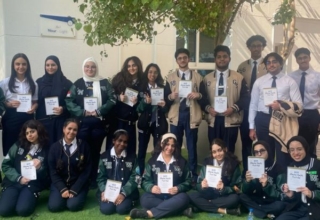
For those who have been either disappointed due to unpunctual implementation of the Right to Education Act, 2009 or antagonized with its ‘impractical’ compliance, there is at least a small reason to cheer up in these Covid 19 pandemic times. The WASH (Water, Sanitation and Hygiene) facilities, which are going to be more critical to the functioning of schools once these reopen, have improved vastly if not fully in schools across India in the past decade. From a meager 20% coverage in 2005, some facilities like toilets and sanitation have gone past 80%; however, drinking water coverage is still around 50%.

So, when schools reopen, which these have to sooner than later, the key determinant in reopening will be school’s WASH preparedness to follow standard operating procedures (SOPS), which will necessarily include hand wash, clean toilets and sufficient water. That is what was precisely discussed by some of top experts at ‘Preparing Schools to Reopen during Covid 19: Improving Water, Sanitation and Hygiene’, a webinar hosted by RTE advocacy network, RTE Forum on September 4.
According to Dr. M. R. Seetharam , an orthopaedic surgeon and President, Swami Vivekananda Youth Movement (SVYM), Mysuru, who is an authority on WASH and South Asia Region and Co-convener of National Steering Committee FANSA (Freshwater Action Network – South Asia), if existing sanitation and hygiene standards are met optimally by schools along with compliance to basic medical protocols, meeting these SOPs should not be a big challenge. Speaking at webinar Dr Seetharam said, “School managements should show right spirit and be accountable to ensure WASH standards. Protocols may require compliance to maintaining distancing, staggered timings, cough hygiene, screening and monitoring of symptoms and some amount of quarantine, appropriate methodologies of mopping and sweeping and ventilation of class rooms will be back in focus.” He also maintained that reopening of school has less costs than the impact prolonged closures will have on education. “Children have resilience and behave better than adults,” he added.
Radhika M Alkazi , founder and head of ASTHA and a member of National Council of RTE Forum, who moderated the webinar said the country doesn’t have best track record in WASH facilities and provisions in schools and unlike pre-covid days, now there may be a need for finding local solutions while keeping standards , “we have to be ready and at the same time have a sense of urgency.”
Availability of water including drinking water in schools is already a major challenge for thousands of schools across the country and as per current standards every school has to provide for 1.5 litre of water per child. As of now according to DISE data only 50% schools have proper drinking water facilities. Now, when the government is actively pursuing a reopening plan, district administrations could be instructed to provide water tankers where there is shortfall or no supply to meet the water demand once schools start reopening .
Dr Pratibha Singh, WASH in Institutions specialist, UNICEF feels the Covid19 should be seen as an emergency and adjustments as standards can’t be revised immediately. “However, in my view an area of intervention would be the enhancement of budgetary allocation for maintenance and operation of WASH facilities at schools, which is insufficient (Rs 2500/100 children per anum) as there is extensive damages to them due to flooding, cyclones and other wsie. “
In the same webinar Dr Anjlee Agarwal, Co-Founder & Executive Director Samarthyam and member, CSO-Standing Committee, NITI Aayog while talking about the challenges that physically challenged and special needs children may face on account of Covid 19 protocols advocated a universal design for toilets and ramps for access.
Dr Arundati Muralidharan, Manager – Policy (WASH in Health & Nutrition, WASH in Schools) – WaterAid India talked about Swachh Bharat Vidyalaya porgramme and emphasized the need to augment it with sufficient water, proportionate units and disposal facilities especially for menstrual waste. Swachh Vidyalaya is the national campaign driving ‘Clean India: Clean Schools’. A key feature of the campaign is to ensure that every school in India has a set of functioning and well maintained water, sanitation and hygiene facilities.
Galvanizing SMCs, Gram Pachayats and sensitizing community to support and monitor WASH infrastructure and behavior will be supportive supervision and local authorities need to ensure guidelines and protocols for the same at the earliest.
The covid 19 pandemic has changed every aspect of life and people especially children will need to internalize the change and emerge resilient and as agents of change.
Reopening schools during COVID-19
Although school children and adolescents (ages 3 to 18 years) can develop COVID-19, most remain asymptomatic or experience mild illness. These youngsters may be less susceptible to infection than older individuals but probably spread the infection at similar rates.
Larger school outbreaks are associated with increased community transmission, insufficient physical distancing, poor ventilation, and lack of masking. Schools that implemented transmission mitigation measures (including in European countries) seem not to have substantially contributed to increased circulation of the virus among local communities.
Minimizing the import of infections into the school can stem the spread of COVID-19. Daily symptom screening can identify individuals with COVID-19 at first presentation. They should seek diagnostic testing. However, infections can be silent. Approximately 15 to 50% of children and 10 to 30% of adults will either not notice symptoms while their immune system fights the infection (asymptomatic carriers) or become infectious 1 to 3 days before symptom onset (presymptomatic carriers). Current diagnostic tests cannot identify silent infections reliably and are not sufficiently fast and inexpensive to make a school-wide testing-based surveillance system practical. Thus, the most effective tool for minimizing the risk of infections being carried into schools is to restrict in-person learning to when infection in the local community is controlled. Countries with widespread testing began opening schools with rigorous safety measures in place when fewer than 30 to 50 new infections were observed within 7 days per 100,000 residents over a prolonged period. Countries providing in-person schooling with basic mitigation measures (i.e., distancing, face masks worn in hallways but not classrooms, hand hygiene, ventilation, and staying home with minimal symptoms) typically have close to zero community transmission.
The likelihood of further transmission must be minimized if infections are brought into school. COVID-19 is spread through liquid particles containing the virus that are generated by breathing, speaking, shouting, singing, coughing, and sneezing. The rapid settling rate of large droplets underlies recommendations for physical distancing, surface disinfection, ventilation, and hand hygiene. Because smaller liquid particles dispersed as aerosols stay airborne, it is not only the distance from another person that determines the risk of transmission, but also the duration of exposure. Limiting room occupancy, avoiding activities such as singing, and improving ventilation are critical in transmission control. Masks reduce spread by droplets and aerosols by limiting release and inhalation. Airborne spread is much less likely outdoors, but sports, where proximity to excessive exhalation is intrinsic to the game, need to be avoided.
Large outbreaks in school can be minimized by limiting secondary transmission to the smallest possible number of persons. Cohorts that remain relatively isolated from each other can reduce person-to-person contact and can facilitate contact tracing if outbreaks occur. Early detection of infected individuals through symptom surveillance and diagnostic testing can limit quarantine measures to the affected cohorts, rather than having to close grades or the entire school.
From these three efforts, a layered approach to risk mitigation in schools can be developed where measures with partial effectiveness are combined to reduce the probability of children, teachers, staff, and family members becoming ill with COVID-19.*
EDITORIAL from Science magazine










